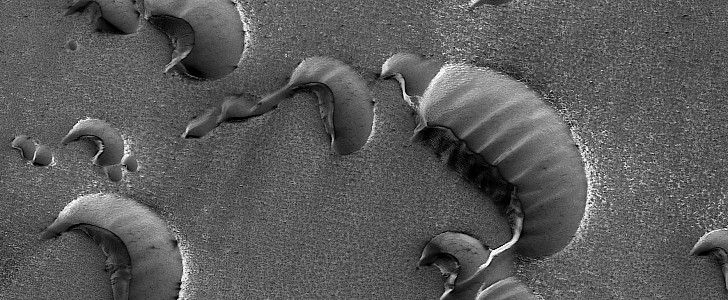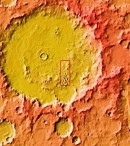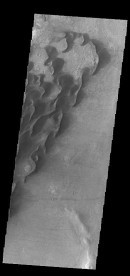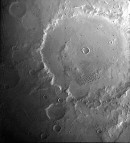Humans didn’t really get to understand just how peculiar (and alien) Mars really is until a flood of images of the planet started coming our way not long ago. Devoid of life, the place still manages to surprise time and time again with the strange features that are spread all over its surface, many of them quickly put in weird context by our imaginative brains.
Everywhere you look on the planet, some kind of reference to something we know, love, or fear can be found. And thanks to the HiRISE camera that has been orbiting the planet for years now, there is no shortage of food for our imagination.
Today’s Martian treat comes from an undisclosed location of the planet, courtesy of an image HiRISE snapped in 2014. Officially, it shows sand dunes that have been transformed into gullies, probably by “carbon dioxide defrosting or the weight causing the surface to slump.”
As said, Mars is devoid of life, as far as we know, but the place is still very much active in terms of weather (we all remember the massive, planet-wide storm that ended up sucking the life out of the Opportunity rover back in 2018), meteor impacts, quakes, and processes such as sublimation that really take their toll on the shape of the surface.
Unofficially, these dunes look like some kind of weirdly-shaped alien creatures flocking together for safety or the fulfillment of some basic need.
According to the people at NASA and the University of Arizona, who are in charge of HiRISE, “the gullies at this site are particularly large, which is intriguing, suggesting that this site be monitored to see if stages of gully formation or details of activity can be observed.”
Looking at these pictures might not seem like a great activity to be involved in right now, but a lot of scientists are doing it in the hopes we’ll get a better understanding of Mars before we decide to turn it into humanity’s second home.
Today’s Martian treat comes from an undisclosed location of the planet, courtesy of an image HiRISE snapped in 2014. Officially, it shows sand dunes that have been transformed into gullies, probably by “carbon dioxide defrosting or the weight causing the surface to slump.”
As said, Mars is devoid of life, as far as we know, but the place is still very much active in terms of weather (we all remember the massive, planet-wide storm that ended up sucking the life out of the Opportunity rover back in 2018), meteor impacts, quakes, and processes such as sublimation that really take their toll on the shape of the surface.
Unofficially, these dunes look like some kind of weirdly-shaped alien creatures flocking together for safety or the fulfillment of some basic need.
According to the people at NASA and the University of Arizona, who are in charge of HiRISE, “the gullies at this site are particularly large, which is intriguing, suggesting that this site be monitored to see if stages of gully formation or details of activity can be observed.”
Looking at these pictures might not seem like a great activity to be involved in right now, but a lot of scientists are doing it in the hopes we’ll get a better understanding of Mars before we decide to turn it into humanity’s second home.








